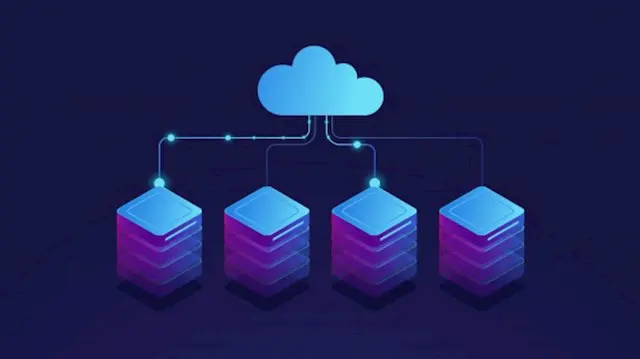
Oracle Multitenant DBA
Self-paced videos, Lifetime access, Study material, Certification prep, Technical support, Course Completion Certificate
Uplatz
Summary
- Certificate of completion - Free
- Reed courses certificate of completion - Free
Add to basket or enquire
Overview
Uplatz offers this comprehensive course on Oracle Multitenant DBA. It is a self-paced course with video lectures. You will be awarded Course Completion Certificate at the end of the course.
Oracle Multitenant is a new option for Oracle database, It consists of database and at least one instance. A CDB includes zero, one, or many customer-created pluggable databases (PDBs). All Oracle databases before Oracle Database 12c were non-CDBs. Oracle Multitenant enables an Oracle Database to function as a container database (CDB).
Oracle Multitenant DBA course by Uplatz will take you all the away from creating an Oracle multitenant capabilities. This is a good opportunity for the students, not only the course will demonstrate the concepts for you, you will also gain practical experience on implementing them.
This Oracle Multitenant DBA course will help you to:
- Understand and use best practices in order to move to the Multitenant architecture
- Practice new DBA tasks on a CDB (creation, clones, plug-in, backup, monitoring)
- Discover the new functionalities brought by the PDB (pluggable database)
Curriculum
Course media
Description
Oracle Multitenant DBA – Course Syllabus
- Overview of Oracle Multitenant DBA
- Installing Oracle Linux 7.8 in Oracle Virtual Box
- Installing Oracle Database 19c Software
- Creating CDB and non-CDB databases
- Creating PDBs from the Seed
- Performing Basic CDB Administration Tasks
- Creating a PDB by Cloning from Local and Remote PDBs
- Creating PDB by Plugging in an Unplugged PDB
- Creating a PDB from non-CDB
- Creating a PDB by Relocating a PDB
- Managing Common and Local Users
- Backup and Recovery in CDB and PDBs
- Flashback and Point-in-time Recovery
- Using Resource Manager with CDB and PDBs
- Using Data Pump Utility with PDBs
- Managing Applications and Application Containers
Oracle database, since its inception, has always used a very specific and unique architecture which served it very well. In earlier forms of this architecture, all components of the database were meant to work in a one-to-one mapping with each other. But from version 12c onwards, a completely new architecture has been introduced – Oracle Multitenant.
In Oracle Database, there are two macro categories of components – one at the hard disk level and another at RAM level. A hard drive contains nothing except stored files, and this is also the case for Oracle Database. There are various types of files that make an Oracle database function, for example data files, control files, online redo logs etc. Besides these files, a memory component exists on the operating system RAM which is a combination of several memory structures and various background processes. This memory portion works as a bridge between the user and the physical files that exist over the disk and is known as an instance.
A CDB consolidates multiple pluggable databases (PDB), a portable collection of schemas, schema objects, and non-schema objects. Oracle multitenant databases were developed to help companies take advantage of all these technologies and cost savings. Create a pluggable database by using different methods:
- Creating a PDB from the seed
- Cloning PDBs from local or remote PDBs including the refreshable PDBs
- Plugging in an Unplugged PDB
- Relocating a PDB
- Creating a PDB from a non-CDB database
- Creating Proxy PDBs
Who is this course for?
Everyone
Requirements
Passion and determination to achieve your goals!
Career path
- Oracle DBA
- Oracle Multitenant Database Administrator
- Principal Consultant Migration Specialist Oracle DBA
- IT Programmer Manager
- Associate (OCA) – Oracle Certified Associate
- Professional (OCP) – Oracle Certified Professional
- Master (OCM) – Oracle Certified Master
- Specialist (OCE) –Oracle Certified Expert
- Expert (OCS) – Oracle Certified Specialist
- Oracle Database Administration Application Developer
Questions and answers
Currently there are no Q&As for this course. Be the first to ask a question.
Certificates
Certificate of completion
Digital certificate - Included
Course Completion Certificate by Uplatz
Reed courses certificate of completion
Digital certificate - Included
Will be downloadable when all lectures have been completed
Reviews
Currently there are no reviews for this course. Be the first to leave a review.
Legal information
This course is advertised on reed.co.uk by the Course Provider, whose terms and conditions apply. Purchases are made directly from the Course Provider, and as such, content and materials are supplied by the Course Provider directly. Reed is acting as agent and not reseller in relation to this course. Reed's only responsibility is to facilitate your payment for the course. It is your responsibility to review and agree to the Course Provider's terms and conditions and satisfy yourself as to the suitability of the course you intend to purchase. Reed will not have any responsibility for the content of the course and/or associated materials.


